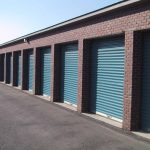A good fireplace is not only the focal feature of a room, but also the metaphorical heart of the home. It provides warmth and a sense of coziness that other modern types of heating cannot match. A fireplace is a great blend of function and design that will heat your home as well as add to its beauty and charm.
Many people falsely believe that fireplaces are not an environmentally friendly way to heat their home. They reference high levels of emissions and poor fuel burning efficiency as reasons why a fireplace is not good for the environment or a source of heat. Fortunately, fireplace design has come a long way over the years. A well-designed modern fireplace will maximise the heating efficiency and minimise the amount of emissions and contaminants that are released into the home.
There are many different types of fireplaces to choose from, with a wide selection of design options and fuel types. The best type of fireplace for your home will depend on a number of different factors, such as the local climate, whether or not the fireplace is being built into a new home or retrofitted into an existing room, and availability of a fuel source. Here are a few of the different options you can choose from.
Wood Fireplaces
One of the most basic fireplace designs is an open hearth wood fireplace. It is the vision that comes to mind when most people think of adding a fireplace to their home. Unfortunately the open hearth wood fireplace does not rank highly in energy efficiency as a heat source, and will also reduce the air quality of the home. People looking to use wood fireplaces to actually provide a source of heat for their home will need to use fireplace inserts to ensure that the warm air actually enters their room, rather than going right up through the chimney.
The other option is to heat your home with one of several types of wood stoves, such as the pot belly stove or updraft stove. By keeping the fire contained within the stove, the system can more efficiently burn the wood as fuel, while keeping the level of emissions lower than a traditional open hearth wood fireplace.
Gas Fireplaces
A gas fireplace or heater uses natural gas or petroleum gas as a fuel source, and can be made with a flued or unflued design. With a flued fireplace or heater, the emissions can be vented outside of the home, so no harmful gases build up in side. An unflued heater on the other hand has the advantage of being potentially portable, though there is an increased risk of emissions if the fireplace is not used properly. Modern gas fireplaces have come a long way in terms of their design aesthetic, and now come very close to mimicking the look of a wood burning fire without all of the hassle and work of one.
Ethanol Heaters
Ethanol is one of the newer types of energy sources used in fireplaces and other home heating applications. Ethanol heaters can use a form of bio-ethanol derived from plant sources, making them an environmentally friendly choice when compared to other types of gas heaters. Ethanol burns very cleanly though it will produce higher levels of carbon dioxide in a poorly ventilated room.
Comparing the Efficiency of Different Types of Fireplaces
Efficiency is only one of the many considerations you should think of when choosing a fireplace for your home, though it is one of the most important. Energy efficiency comparisons can be made by taking into account the kilowatt hours generated per kilogram of the fuel source, multiplied by the cost of the fuel. Generally you want to choose a fuel that is widely available in the area, so you can avoid paying a premium price to use your fireplace.
Finally the other important factor to consider is the fireplaces’ effectiveness at converting the fuel to heat. A standard wood fireplace has a very low efficiency of less than 10%. Installing a fireplace insert to your wood burning fireplace will raise the efficiency to approximately 20-35%. A closed stove or heating system can achieve up to a 70% efficiency. Gas heaters vary in efficiency based on the type of fuel used, but are generally the most efficient at converting the fuel source into heat. They are also very popular because they are easy to use and don’t require a large stock of split logs of wood.






